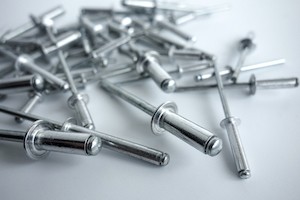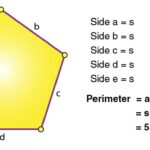Rivets are permanent mechanical fasteners used across various industries to join materials. They offer superior resistance to vibrations and tension compared to screws or bolts. This guide explores what a riveter is, how it works, and the different types of rivets available.
What is a Rivet?
A rivet is a fastener consisting of a head and a cylindrical body (shaft). The shaft’s end is often tapered, called the tail. Rivets are used to join structural pieces and small electronic assemblies. Many rivets feature a hollow shaft to accommodate a mandrel. The mandrel is instrumental, allowing a riveter to deform the rivet’s tail without directly striking it. This feature is particularly useful in “blind” applications, where access to the back of the joint is limited.
How Do Rivets Work?
The riveting process involves several key steps:
- Preparation: A hole is drilled or punched through the materials being joined.
- Insertion: The rivet is inserted through the aligned holes.
- Deformation: The rivet’s tail is then “upset” or deformed using mechanical force, typically from a hammer or rivet gun.
- Expansion: This deformation expands the tail to about 1.5 times the shaft’s original diameter, securing the rivet in place. The flattened tail creates a dumbbell shape, effectively clamping the materials together. The original head is known as the “factory head,” while the deformed end is called the “buck-tail.”
Rivets excel at supporting tension and preventing radial movement. Their permanent nature makes them comparable to welding or structural adhesives. However, unlike welds, rivets offer improved resistance to vibrations, leading to more secure joints in dynamic environments.
Different Types of Rivets
The variety of rivets reflects the diverse range of materials and applications they serve. Here’s a breakdown of common rivet types:
-
Solid Rivet: A basic design featuring a solid shaft and a head. The tail is deformed using a rivet gun or hammer.
-
Split Rivet: Features a split shaft that expands when driven through softer materials like leather, wood, or plastic. Ideal for home repair but unsuitable for critical applications.
-
Blind Rivet (Pop Rivet): Designed for use when only one side of the joint is accessible. A rivet gun pulls a mandrel through the hollow shaft, deforming the rivet and fastening the materials. The mandrel then snaps off, leaving a clean finish.
-
Friction Lock Rivet: Also known as a self-plugging rivet, this type uses internal pressure from a stem to expand the shaft and plug the hole behind it, creating a secure joint.
-
Self-Piercing Rivet (SPR): Eliminates the need for pre-drilled holes. SPRs are cold-forged with a grooved end that pierces the materials being joined, creating a gas/water-tight seal.
-
Threaded Rivet: A blind rivet with an internally threaded hollow shaft. It threads onto a mandrel on a rivet gun, which is then pulled through the shaft to upset it. External ridges provide better surface area contact within the pilot hole.
-
Semi-Tubular Rivet: Similar to a solid rivet but with a hole at the tail’s end. This hole causes the shaft to roll outward when force is applied, reducing the required force for assembly.
-
Oscar Rivet: Similar to a blind rivet, but the shaft splits and folds out when the mandrel is drawn through, making it ideal for high-vibration applications where the rear surface is inaccessible.
How Do Pop Rivets Work?
Pop rivets (blind rivets) are installed from one side of the material. The process is simple:
- Drill: Drill a pilot hole through both surfaces.
- Insert: Put the rivet’s mandrel into the rivet gun’s nose piece and push the shaft through the holes.
- Compress: Squeeze the rivet gun’s trigger to pull the mandrel through the hollow shaft, upsetting the tail end.
- Snap: At the correct depth, the mandrel snaps off at the “necked” area.
- Repeat: Continue setting rivets as needed.
Calculating Rivet Size
Proper rivet size is critical for a strong and stable joint. Consider both length and width. Here are general guidelines:
- Length: The rivet’s length should equal the combined thickness of the materials being joined plus 1.5 times the rivet’s diameter. Too small, and the rivet might pull through; too thin, and it could shear under pressure.
- Diameter: The rivet’s diameter should be approximately three times the thickness of the thickest material being joined.
For example, when joining two 2 mm thick metal sheets, use a rivet with a diameter of 6 mm (approximately 1/4 inch) and a length of at least 9.5 mm.
Advantages and Disadvantages of Rivets
Advantages:
- Cost-Effective: Rivets are generally inexpensive.
- Versatile: They can join dissimilar materials.
- Environmentally Friendly: Riveting doesn’t produce fumes or gases like welding.
- Reliable Joints: They provide reliable joints, especially in vibrating environments.
- Easy Inspection: Rivet joints are easy to inspect compared to welded joints.
Disadvantages:
- Bulky Joints: Riveted joints can be bulkier than welded joints.
- Aesthetics: The rivet projection can affect the appearance.
- Slow Production: Assembly can be time-consuming.
- Stress Concentration: Holes required for rivets can create stress points.
Rivet Applications
Rivets are used in various applications across many industries:
- Automotive
- Household objects
- Electrical appliances
- Kitchen knives
- Aerospace
- Satellites and spacecraft
- Shipbuilding
FAQs
What is a Rivet?
A rivet is a mechanical fastener used to permanently join two or more materials together.
Are Rivet Joints Strong?
Yes, rivets can create very strong and permanent joints when installed correctly.
Why Are Blind Rivets Useful?
Blind rivets allow you to create strong joints even when you only have access to one side of the materials being joined. They eliminate the need for tapping threads or using nuts, simplifying the process.

